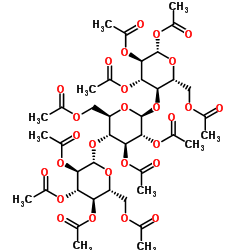Anti-adhesion and antiproliferative cellulose triacetate membrane for prevention of biomaterial-centred infections associated with Staphylococcus epidermidis.
Clara I Extremina, A Freitas da Fonseca, Pedro L Granja, António P Fonseca
文献索引:Int. J. Antimicrob. Agents 35(2) , 164-8, (2010)
全文:HTML全文
摘要
The initial step in preventing biomaterial-associated infections consists of preventing bacterial adhesion to the device surface. One possible approach is the design of antibiotic-releasing biomaterials. Cellulose triacetate (CTA) membranes with the antibiotic imipenem (IPM) entrapped (CTA-IPM) were prepared. The material was characterised in terms of surface morphology by scanning electron microscopy, surface free energy of interaction and X-ray photoelectron spectroscopy (XPS). Antibiotic release studies were also performed. In vitro adhesion of Staphylococcus epidermidis RP62A to CTA-IPM was investigated using a modified microtitre plate assay, and the antibacterial activity of the CTA-IPM membrane was assessed by a modified Kirby-Bauer test, which showed effective entrapment of the antibiotic as confirmed by XPS and hydrophilicity assays. Release studies showed that this drug-polymer conjugate serves as an adequate reservoir for sustained release of IPM over a period of 71h at an effective bacteriostatic concentration. Moreover, bacterial adhesion tests showed a statistically significant decrease in the adhesion of S. epidermidis RP62A to CTA-IPM compared with its adhesion to CTA alone. The present innovative approach is capable of providing a membrane with anti-adhesive and antiproliferative properties, thus encouraging in vivo studies to provide a better simulation of the clinical situation.Copyright 2009 Elsevier B.V. and the International Society of Chemotherapy. All rights reserved.
相关化合物
| 结构式 | 名称/CAS号 | 分子式 | 全部文献 |
|---|---|---|---|
 |
三乙酸纤维素
CAS:9012-09-3 |
C40H54O27 |
|
Biodegradation of propionitrile by Klebsiella oxytoca immobi...
2010-05-15 [J. Hazard. Mater. 177(1-3) , 856-63, (2010)] |
|
Modification of chitosan derivatives of environmental and bi...
2013-04-01 [Int. J. Biol. Macromol. 55 , 231-9, (2013)] |
|
Update of a cohort mortality study of workers exposed to met...
2011-12-01 [Int. Arch. Occup. Environ. Health 84(8) , 889-97, (2011)] |
|
Synthesis of modified polymer inclusion membranes for photo-...
2012-08-15 [J. Hazard. Mater. 227-228 , 386-93, (2012)] |
|
Molecular dynamics simulation of the dissolution process of ...
2011-01-01 [Carbohydr. Res. 346(18) , 2940-7, (2011)] |